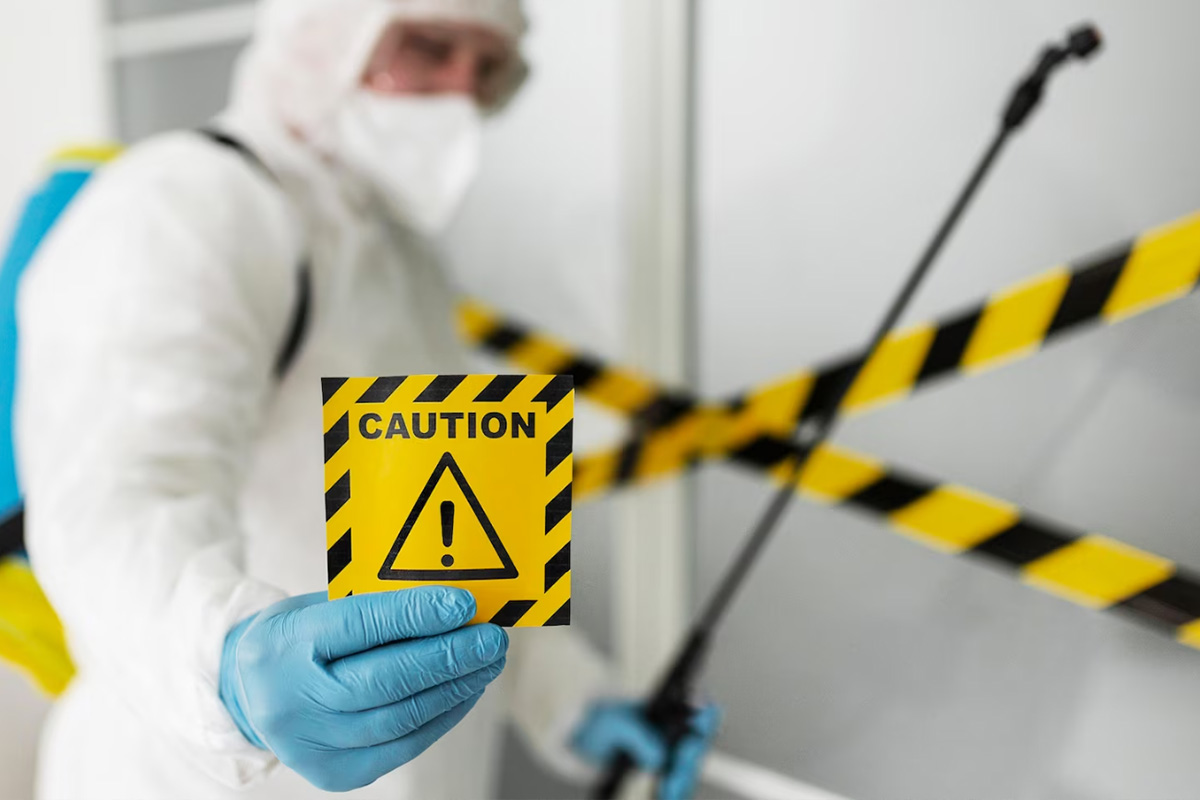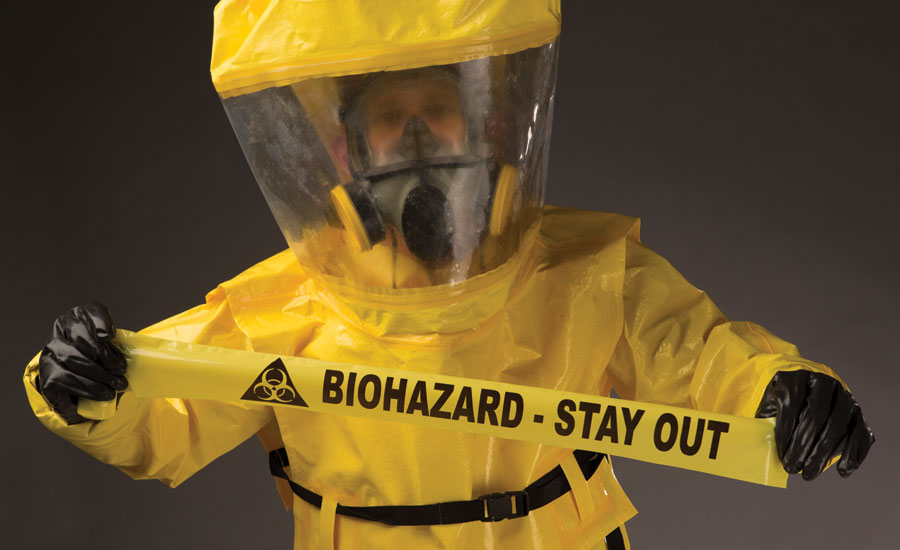Exact ATP Testing for Effective Cleanliness and Hygiene Tracking
Exact ATP Testing for Effective Cleanliness and Hygiene Tracking
Blog Article
Professional Biohazard Cleaning and Purification for Blood, Bodily Fluids, and Hazardous Materials
In the world of biohazard cleansing and decontamination for blood, physical liquids, and unsafe products, precision and experience are paramount. The potential health and wellness risks related to direct exposure to biohazards emphasize the critical demand for meticulous handling and comprehensive cleaning. Specialized training outfits experts with the expertise and skills necessary to resolve these harmful scenarios successfully. Nonetheless, it is not just concerning tidying up; the relevance of using appropriate purification methods can not be overstated. As we navigate the complex landscape of biohazard clean-up, recognizing the subtleties of regulations, compliance, and the customized devices at play comes to be vital in making certain a risk-free and detailed decontamination process.
Health Threats of Biohazard Exposure
Direct exposure to biohazards postures substantial health and wellness threats that can cause serious repercussions for areas and individuals alike. Biohazards incorporate a wide variety of biological substances, including blood, bodily fluids, mold and mildew, microorganisms, viruses, and various other possibly transmittable products. When people enter contact with these biohazards, whether through mishaps, inappropriate handling, or ecological direct exposure, they face the risk of having severe health problems or illness.
One of the key health and wellness dangers related to biohazard direct exposure is the transmission of contagious illness. Bloodborne microorganisms such as HIV, liver disease B and C, and numerous microorganisms can be existing in biohazardous products, presenting a straight threat to human wellness. Inhaling airborne biohazards like mold and mildew spores or entering call with contaminated surface areas can additionally cause respiratory system issues, allergic reactions, and various other adverse health and wellness results.
Moreover, biohazard direct exposure can have long-term health implications, with some illness materializing years after the first call (Blood Cleanup). Therefore, it is crucial to focus on appropriate biohazard cleaning and purification to minimize these wellness threats and guarantee the security of communities and people

Specialized Educating for Biohazard Cleanup
When it involves taking care of biohazard clean-up effectively and securely, specialized training plays a fundamental function in guaranteeing proper purification procedures are adhered to. Biohazard cleaning needs specific knowledge and abilities to properly alleviate threats connected with bloodborne virus, bodily fluids, and harmful products. Professionals trained in biohazard cleaning undergo strenuous guideline on how to safely deal with, eliminate, and take care of biohazardous materials to avoid contamination and exposure.
Specialized training for biohazard cleanup covers a range of crucial topics, including correct personal protective equipment (PPE) use, bloodborne pathogen recognition, purification methods, and contaminated materials disposal methods. People educated in biohazard cleanup are furnished with the necessary experience to assess contamination levels, recognize potential risks, and carry out appropriate clean-up treatments in compliance with regulatory standards.
Continuous training and education and learning are vital in the field of biohazard clean-up to stay updated on the most recent purification technologies, security protocols, and policies. By spending in specialized training, biohazard clean-up professionals can properly respond to emergency clean-up scenarios and guard both public wellness and the atmosphere.
Significance of Proper Purification Methods
Using correct purification methods is important in biohazard cleaning to properly eliminate dangerous materials and reduce health threats. Efficient decontamination not only ensures the removal of visible traces of blood, physical liquids, and various other biohazards but also targets undetectable microorganisms that might pose serious wellness dangers if not correctly eradicated. By adhering to rigid decontamination procedures, trained professionals can significantly reduce the threat of direct exposure to hazardous bacteria, viruses, and germs that could lead to illness or infections.
Proper decontamination methods entail using specialized devices and anti-bacterials that are especially designed to counteract biohazards efficiently. Extensive cleansing and sanitation of infected areas are necessary to prevent the spread of microorganisms and guarantee a safe atmosphere for occupants. In addition, the correct disposal of biohazardous waste adhering to purification treatments is essential in avoiding contamination of other surfaces or individuals.

Tools and Devices for Safe Clean-up
When dealing with blood, physical liquids, or hazardous materials, biohazard cleansing specialists rely on specialized equipment to reduce direct exposure threats and completely decontaminate the damaged location. In addition, biohazard cleaning kits having anti-bacterials, absorbing products, and biohazard bags are made use of to securely dispose and include of infected items.
Advanced cleansing devices like hospital-grade disinfectants, HEPA-filtered vacuums, and misting machines are employed to disinfect surfaces and eliminate biohazards effectively. Specialized equipment such as sharps containers and biohazard garbage disposal bins are made use see this of to safely manage sharp items and biohazardous waste materials. By making use of the appropriate devices and devices, biohazard cleaning professionals can make certain a thorough cleanup process that prioritizes safety and security and decreases health and wellness threats for both workers and occupants of the damaged space.
Regulations and Conformity in Biohazard Cleansing
Appropriate adherence to guidelines and conformity standards is vital in biohazard cleansing to ensure the security of both workers and the atmosphere. Federal government firms such as OSHA (Occupational Web Site Safety and Health And Wellness Administration) and the EPA (Epa) have actually developed certain guidelines for biohazard cleanup procedures to lessen health risks and ecological contamination. These guidelines cover an array of aspects including the handling, transport, and disposal of biohazardous products, along with the required training and safety devices needed for personnel associated with the cleanup process.
Biohazard cleansing firms should stay updated with these policies to ensure that their procedures meet the needed safety requirements. Failing to follow these regulations can lead to extreme consequences, including fines, legal activity, and endangering the wellness of individuals and the atmosphere. By complying with strict regulations and compliance actions, biohazard cleaning business can effectively reduce threats and make certain a comprehensive and risk-free cleaning procedure for all events involved.
Final Thought
To conclude, biohazard cleansing and decontamination call for specialized training, appropriate methods, and adherence to guidelines. Exposure to blood, bodily fluids, and dangerous products postures substantial health dangers, making it critical to use the appropriate equipment and tools for risk-free cleaning. By following stringent procedures and guidelines, professionals can efficiently alleviate the risks related to biohazard direct exposure and guarantee the security of both themselves and others.
As we navigate the intricate landscape of biohazard cleaning, comprehending the nuances of policies, compliance, and the browse this site specific equipment at play becomes important in making certain a risk-free and extensive purification process. (Blood Cleanup)
When it comes to dealing with biohazard clean-up successfully and safely, specialized training plays an essential duty in making sure proper decontamination treatments are followed.Making use of proper decontamination strategies is essential in biohazard cleanup to effectively remove unsafe materials and decrease wellness dangers. Additionally, biohazard cleaning sets consisting of anti-bacterials, absorbent materials, and biohazard bags are utilized to securely contain and dispose of contaminated things.
Federal government firms such as OSHA (Occupational Safety and Wellness Administration) and the EPA (Environmental Security Company) have established certain standards for biohazard cleaning treatments to decrease health risks and ecological contamination.
Report this page